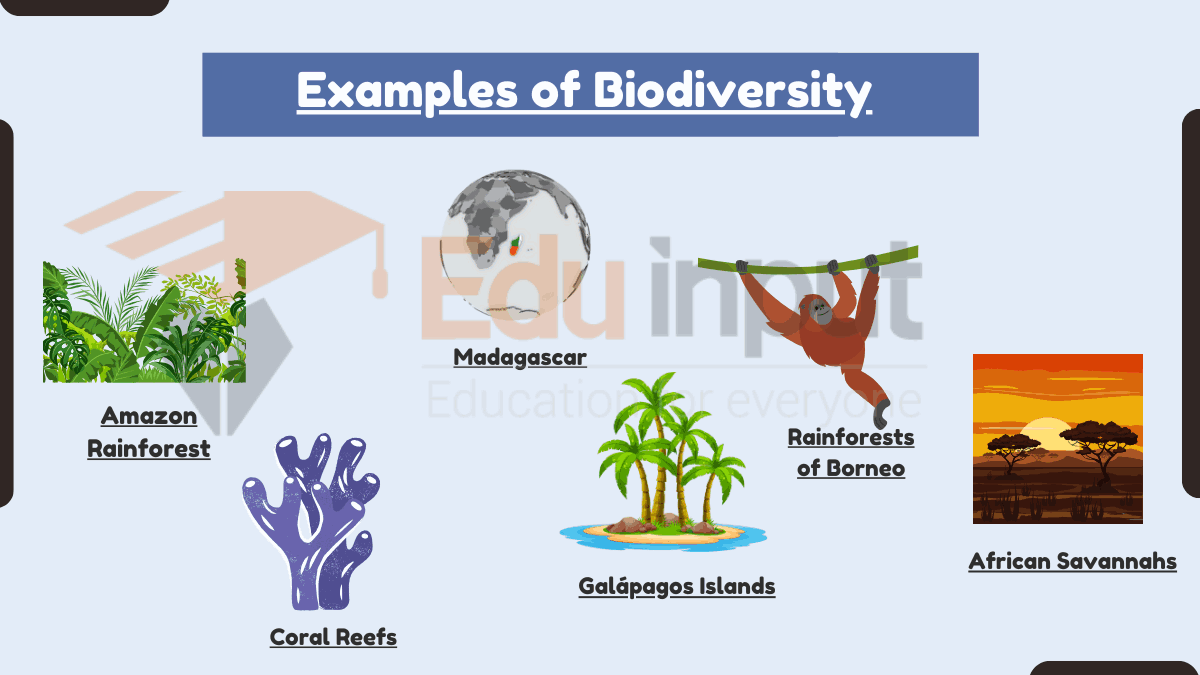10 Examples Of Allopatric Speciation
Allopatric speciation is a type of speciation that occurs when a population of organisms is physically isolated from another population, leading to the development of distinct species.
Galápagos finches, Hawaiian honeycreepers, Australian marsupials, like kangaroos and koalas are few examples of Allopatric Speciation.
Examples Of Allopatric Speciation
Here are few examples of Allopatric Speciation:
1. Galápagos finches
This is one of the most important examples of allopatric speciation. Charles Darwin observed that different species of finches had evolved on separate islands in the Galápagos archipelago due to geographic isolation. The different finches have different beak shapes, which allow them to eat different foods.
The Galápagos finches are an example of allopatric speciation because they were physically separated from each other by the different islands in the archipelago. This physical separation prevented them from interbreeding, which allowed them to evolve into different species.
2. Hawaiian honeycreepers
These birds are another example of allopatric speciation. They diversified into various species on different Hawaiian islands, each adapting to the specific ecological niches on their respective islands. For example, the Maui parrotbill has a long, curved beak that allows it to eat nectar from deep flowers, while the ʻAmakihi has a short, sharp beak that allows it to eat insects.
The Hawaiian honeycreepers are an example of allopatric speciation because they were physically separated from each other by the different islands in the archipelago. This physical separation prevented them from interbreeding, which allowed them to evolve into different species.
3. Australian marsupials
The separation of Australia from other landmasses millions of years ago led to the evolution of unique marsupial species, such as kangaroos, koalas, and Tasmanian devils. These animals are all found nowhere else in the world.
The Australian marsupials are an example of allopatric speciation because they were physically separated from other landmasses by the ocean. This physical separation prevented them from interbreeding with other mammals, which allowed them to evolve into unique marsupial species.
4. Cichlid fish in African Lakes
Cichlid fish in East African Rift Valley lakes like Lake Victoria underwent allopatric speciation due to the isolation of different populations in separate lakes. This has resulted in the evolution of thousands of different species of cichlid fish, each adapted to a specific habitat.
The cichlid fish in East African Rift Valley lakes are an example of allopatric speciation because they were physically separated from each other by the different lakes in the region. This physical separation prevented them from interbreeding, which allowed them to evolve into thousands of different species.
5. Darwin’s frogs
The two species of Darwin’s frogs, found in Chile and Argentina, have evolved in isolation. One species has developed a unique brooding behavior of carrying tadpoles in its vocal sac.
The Darwin’s frogs are an example of allopatric speciation because they were physically separated from each other by the Andes Mountains. This physical separation prevented them from interbreeding, which allowed them to evolve into two different species.
6. Island lizards
Lizard species on Caribbean islands, such as Anolis lizards, have undergone allopatric speciation due to isolation on different islands. This has resulted in the evolution of lizards with diverse adaptations and morphologies, such as different body sizes, colors, and behaviors.
The island lizards are an example of allopatric speciation because they were physically separated from each other by the different islands in the Caribbean Sea. This physical separation prevented them from interbreeding, which allowed them to evolve into lizards with diverse adaptations and morphologies.
7. African Rift Valley Rift
The geological formation of the African Rift Valley has caused isolation between populations, leading to speciation events in various groups of organisms, including plants and insects. For example, the coffee plant is thought to have originated in the African Rift Valley and then dispersed to other parts of the world.
The African Rift Valley Rift is an example of allopatric speciation because it physically separated populations of organisms, preventing them from interbreeding. This can lead to speciation, as the isolated populations can evolve into different species.
8. Madagascar lemurs
The island of Madagascar’s isolation from mainland Africa allowed lemurs to evolve into various species adapted to different ecological niches. Lemurs are found nowhere else in the world.
The Madagascar lemurs are an example of allopatric speciation because they were physically separated from other primates by the Indian Ocean. This physical separation prevented them from interbreeding with other primates, which allowed them to evolve.
9. Drosophila fruit flies
Drosophila species have diversified through allopatric speciation events, often due to geographic barriers like mountains or bodies of water. For example, the species Drosophila melanogaster is found all over the world, but it is thought to have originated in Africa.
The Drosophila fruit flies are an example of allopatric speciation because they have been physically separated from each other by different geographic barriers, such as mountains and bodies of water. This physical separation has prevented them from interbreeding, which has allowed them to evolve into different species.
10. Hawaiian silverswords
These unique plants have diversified into different species on different Hawaiian islands, often due to geographic isolation and adaptation to varying altitudes and climates. For example, the silversword plant is found only on the island of Maui.
The Hawaiian silverswords are an example of allopatric speciation because they have been physically separated from each other by the different Hawaiian islands. This physical separation has prevented them from interbreeding, which has allowed them to evolve into different species.

 written by
written by 



Leave a Reply